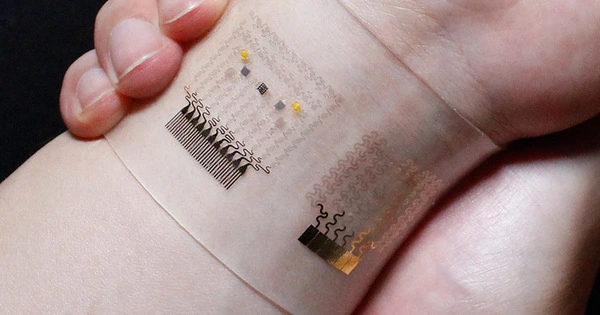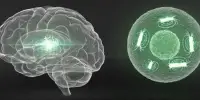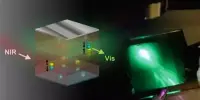Researchers at MIT have developed a method for 3D printing materials with tunable mechanical properties that can sense how they move and interact with their surroundings. These sensing structures are created by the researchers using only one material and a single run on a 3D printer.
The researchers began with 3D-printed lattice materials and incorporated networks of air-filled channels into the structure during the printing process to achieve this. Engineers can get feedback on how the material is moving by measuring how the pressure changes within these channels when the structure is squeezed, bent, or stretched.
These lattice materials are made up of single cells that are repeated in a pattern. Changing the size or shape of the cells changes the mechanical properties of the material, such as stiffness or hardness. A denser network of cells, for example, results in a stiffer structure.
This technique could be used to develop flexible soft robots with embedded sensors that allow the robots to understand their posture and movements in the future. It could also be used to create wearable smart devices, such as customized running shoes that provide feedback on how an athlete’s foot strikes the ground.
“The idea with this work is that we can take any material that can be 3D-printed and have a simple way to route channels throughout it so we can get sensorization with structure. And if you use really complex materials, then you can have motion, perception, and structure all in one,” says co-lead author Lillian Chin, a graduate student in the MIT Computer Science and Artificial Intelligence Laboratory (CSAIL).
Joining Chin on the paper are co-lead author Ryan Truby, a former CSAIL postdoc who is now as assistant professor at Northwestern University; Annan Zhang, a CSAIL graduate student; and senior author Daniela Rus, the Andrew and Erna Viterbi Professor of Electrical Engineering and Computer Science and director of CSAIL. The paper is published in Science Advances.
The idea with this work is that we can take any material that can be 3D-printed and have a simple way to route channels throughout it so we can get sensorization with structure. And if you use really complex materials, then you can have motion, perception, and structure all in one.
Lillian Chin
Architected materials
The researchers concentrated on lattices, a type of “architected material” with mechanical properties that can be changed based solely on their geometry. Changing the size or shape of the cells in the lattice, for example, makes the material more or less flexible.
While architected materials can have distinct properties, integrating sensors is notoriously difficult. Engineers must typically place sensors on the outside, which is difficult because the lattice is riddled with holes, leaving little material to work with. Furthermore, when sensors are placed on the outside, they are not fully integrated with the material and can be affected by noise caused by the movement of a soft material.
Instead, Chin and her collaborators used 3D printing to incorporate air-filled channels directly into the struts that form the lattice. When the structure is moved or squeezed, those channels deform and the volume of air inside changes. The researchers can measure the corresponding change in pressure with an off-the-shelf pressure sensor, which gives feedback on how the material is deforming.
Because they are incorporated into the material, these “fluidic sensors” are more accurate than sensors placed on the outside of a structure.
“If you stretch out a rubber band, it takes a little time to come back into place. But since we are using air and the deformations are relatively stable, we don’t get these same time-varying properties. The information that comes out of our sensor is a lot cleaner,” Chin says.

“Sensorizing” structures
The researchers incorporate channels into the structure using digital light processing 3D printing. In this method, the structure is drawn out of a pool of resin and hardened into a precise shape using projected light. An image is projected onto the wet resin and areas struck by the light are cured.
But as the process continues, the sticky resin tends to drip and get stuck inside the channels. The researchers had to work quickly to remove excess resin before it was cured, using a mix of pressurized air, vacuum, and intricate cleaning.
“We’ll have to do more brainstorming from the design side to think about that cleaning process,” she says, referring to the main challenge. They demonstrated how the air-filled channels generated clear feedback when the structures were squeezed and bent using this process to create several lattice structures.
Based on these findings, they developed sensors for a new class of materials for motorized soft robots known as handed shearing auxetics, or HSAs. HSAs can be twisted and stretched at the same time, allowing them to be used as effective soft robotic actuators. However, because of their complex forms, they are difficult to “sensorize.”
They 3D printed an HSA soft robot capable of several movements, including bending, twisting, and elongating. They ran the robot through a series of movements for more than 18 hours and used the sensor data to train a neural network that could accurately predict the robot’s motion.
Chin was impressed by the results — the fluidic sensors were so accurate she had difficulty distinguishing between the signals the researchers sent to the motors and the data that came back from the sensors.
“Materials scientists have been working hard to improve the functionality of architected materials. To connect what those researchers have been doing with this realm of perception appears to be a simple, yet extremely powerful idea. When we add sensing, roboticists like me will be able to use this as an active material rather than just a passive one” she claims
“Sensorizing soft robots with continuous skin-like sensors has long been a field challenge. This new method gives soft robots accurate proprioceptive capabilities and opens the door to exploring the world through touch” explains Rus.















